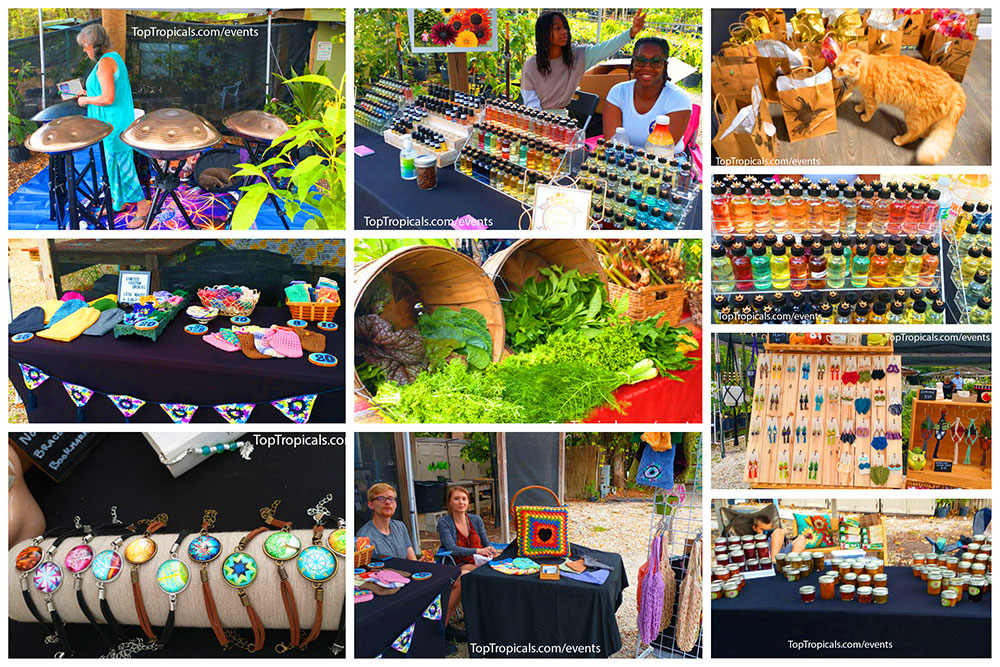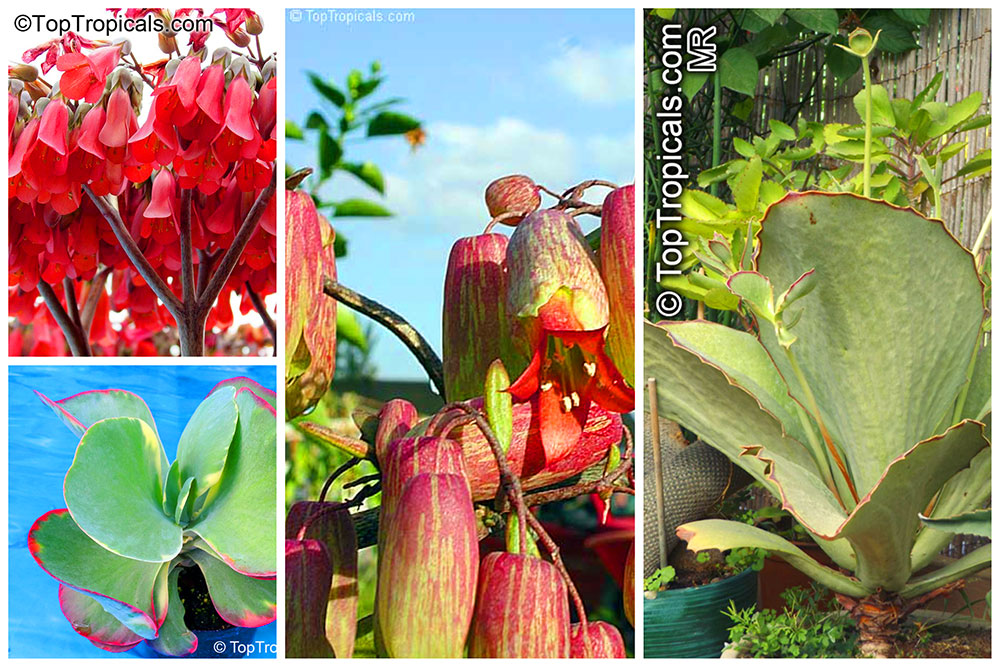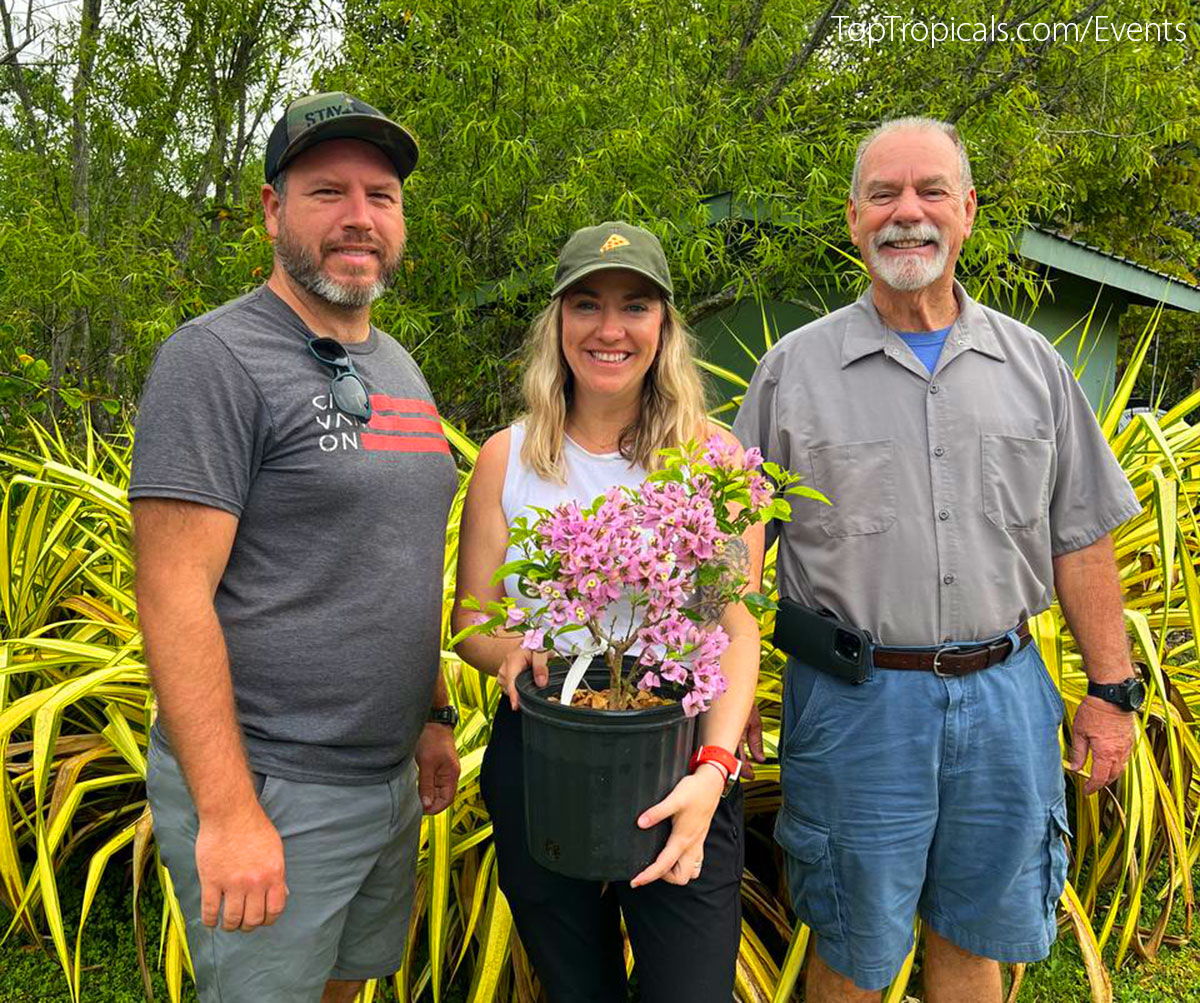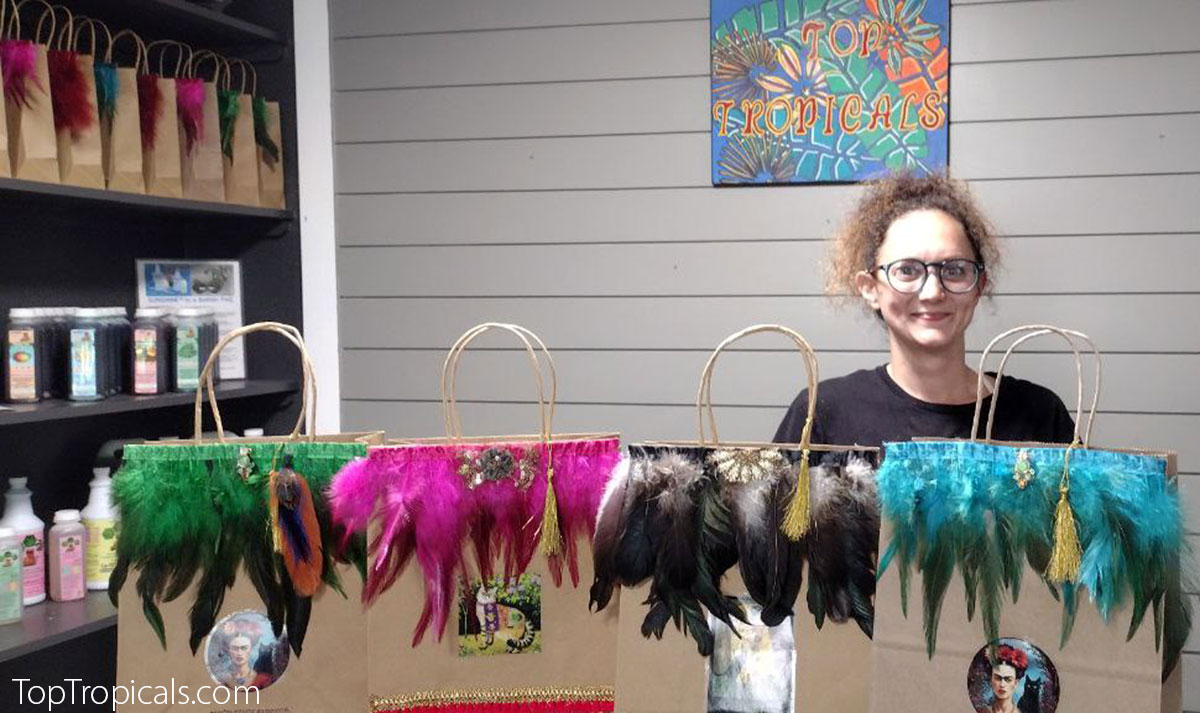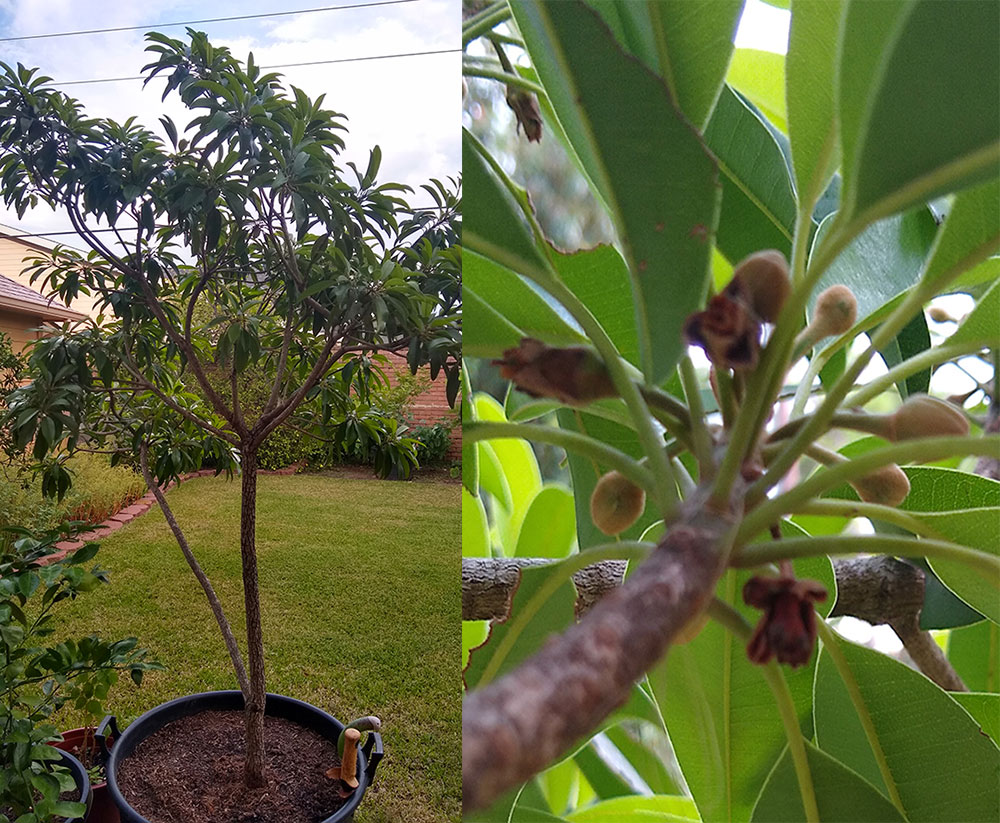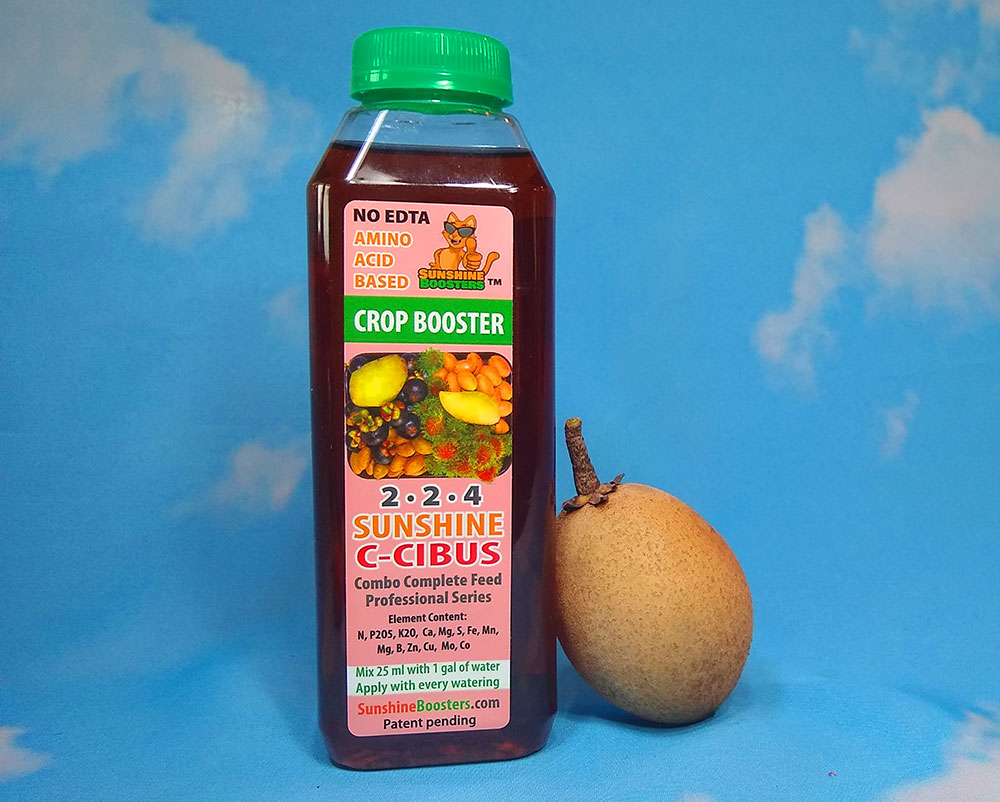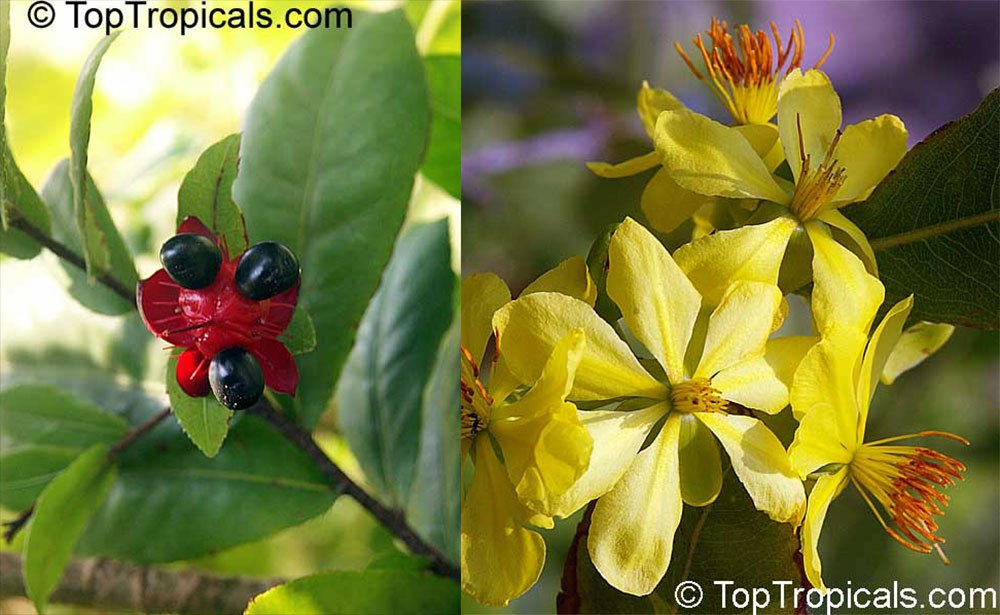Garden Blog - Top Tropicals
Date:
Join our Sunday Garden Party Today!
Saving on your favorite plants is Easy.
Easy like Sunday Morning...
It's time for our favorite day and another Easy stroll through Top Tropicals Garden with savings of
up to 50% and MORE!
Spring into Spring Garden Party
Local or Virtual
Spring has arrived! Spring signals new beginnings and
nature's renewal and offers a ray of hope in a world that could really use some
right now.
Today is our Spring into Spring Garden Party at our TopTropicals Garden Center in
Fort Myers, Florida. Cool vendors, Live Music, Plant Clinic and 15% off all
plants. If you can't join us live, come to this virtual party and you can Save
15% too! And more...
Check our event page for the latest pictures and take advantage of our savings available to you! 15% off all orders of $100 or more. Simply use the code GARDENPARTY at checkout and save!
For 15% off use code:
GARDENPARTY
Min order $100 excluding S/H, exp. 3-21-22.
Exclusive offer for online guests only:
50% OFF 4 rare Kalanchoe species
As a special offer for online shoppers, we offer a flash deal of easy to grow, yet rare Kalanchoe varieties, with at instant 50% OFF for one day only! On top of that, use your GARDENPARTY 15% off coupon at checkout and make it a STEAL!
Kalanchoe synsepala Magnificent - Walking Cup Kalanchoe
Kalanchoe
thyrsiflora (tetraphylla ) - Flapjacks
Kalanchoe pinnata -
Hawaiian Air Plant, Bahamas Breath Plant
Kalanchoe
daigremontiana - Mother of Thousands
Remember, this Easy Sunday Deal expires on Monday, 3-21-22.

Horny plant hanging in the air
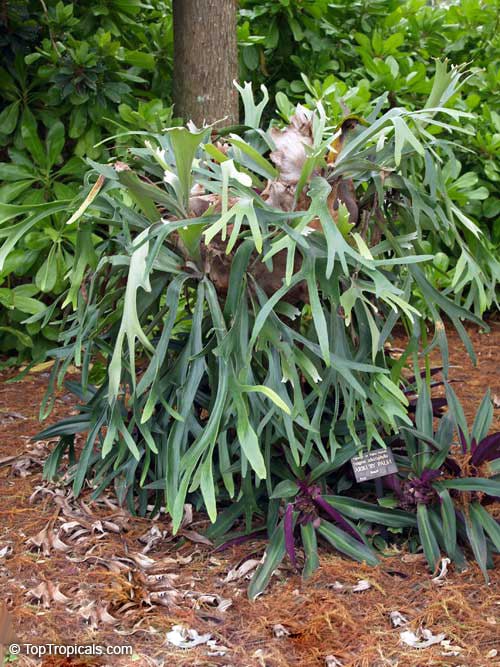
Staghorn fern (Platycerium)
Staghorn fern (Platycerium)

Staghorn fern (Platycerium)
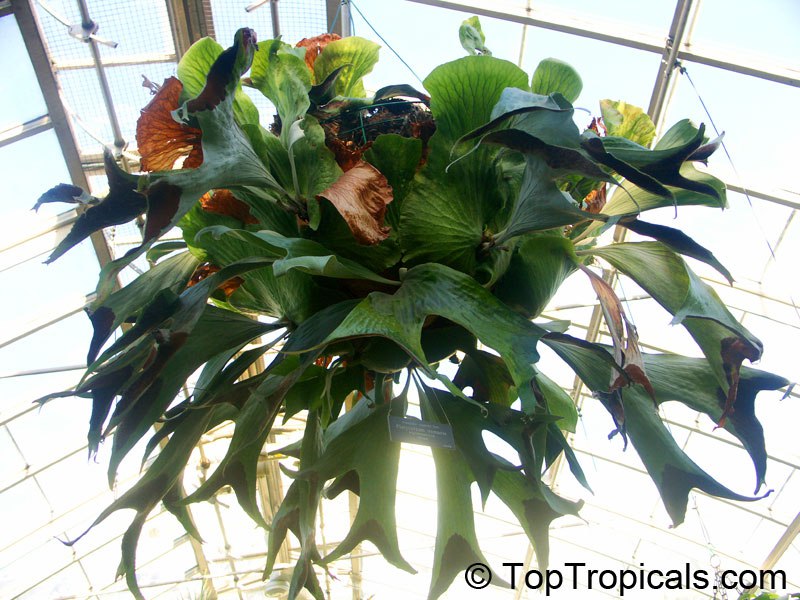
Staghorn fern (Platycerium)
- 👀 Staghorn fern (Platycerium) is one of those #Nature_Wonders... Everyone who sees it, wants to have one!
- 👀 Showy, tropical looking epiphyte that can be grown on a tree or in a large hanging basket.
- 👀 It is able to grow high in the trees of the rainforest, often grows in large masses.
- 👀 Long, pendulous, much bifurcated fertile fronds produce spores on special cup-shaped appendages. Basal fronds form a crown-shaped basket.
🛒 Order online - we have a few X-large plants
#Nature_Wonders #Shade_Garden #Container_Garden
🏵 TopTropicals
Date:
Event mementos: everybody had a happy time!
Our heartfelt gratitude to each and every one of you for visiting our Plant Festival March into Spring - on Saturday. It was delightful to
see so many of you exploring the array of plants, finding ones that spoke to
you, and ultimately making purchases that brought joy and life into your homes
and gardens. The early birds received amazing Artistic Gift Bags by Onika
Amell.
Your support means the world to us! It's moments like these that remind us
of the beauty and wonder that nature brings into our lives...
Date:
From Anna Banana: Shipping and planting during hot weather
Q: I received email notification that my order was delayed due to hot weather. Why? And do I need to do anything special if I plant when it is hot?
A: When plants are shipped via FedEx Ground, it is hot in the truck! According to our FedEx area manager information, if outside temperature is 100 degrees, inside the truck it can be 130! We don't want to put your plants through that much stress. We monitor the weather at destination, and as soon as it cools down a little bit, your order will be shipped.
Planting during
hot weather:
1. For a mail-ordered plant follow planting instructions and never
plant it from the box directly into the ground. Keep it in a pot the size of a
root ball until the plant recovers from shipping stress, re-grows root system
and adjusts from several days of darkness to a bright light. Move the pot
gradually into brighter light, eventually into a spot of its permanent home. Do
not over water the pot. Once you see new growth - the plant is ready to be
transplanted into the ground.
2. Use only quality soil, containing lots of organic matter (compost, peat
moss); soil conditioner is beneficial (pine bark). Plant it on a little hill,
so growing point is elevated 1-1.5" above the rest of the surface.
3. Put a good layer of mulch around the plant, at least 1-2" thick, and not
too close to the trunk as it may cause stem rot on contact.
4. Water daily with a garden hose until the plant shows active growth -
then watering may be reduced every other day or less, or you may rely on
sprinklers and/or rains.
5. If the sun is too hot, use shade cloth (or simply a white bed sheet) to
cover the plant for the first few days (use bamboo sticks for support). It
will help the plant to establish without heat stress. If leaves start dropping
- this may be a sign of excessive light and heat. Shading is the way to
reduce it.
6. Use SUNSHINE booster to help plants overcome heat stress, and shipping
stress. It really works!
Remember that a plant has a very slow nature, unlike creatures from animal world. Give it some time and never rush it into new conditions. Go slowly and patiently - this is the only way to get a reward of a fruit crop or a beautiful flower.
Yearning for Jungle Vibes? Discover the Giant Birds Nest Anthurium - look at the size of this monster!
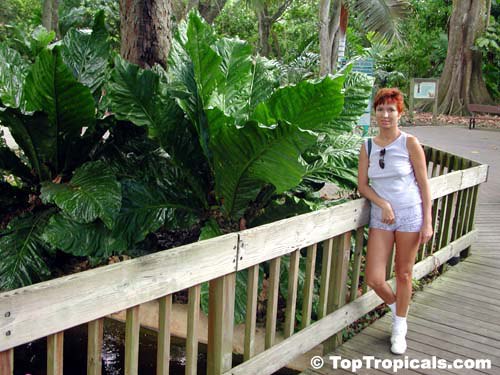
Anthurium x hookeri - Giant Bird's Nest

Anthurium x hookeri - Giant Bird's Nest
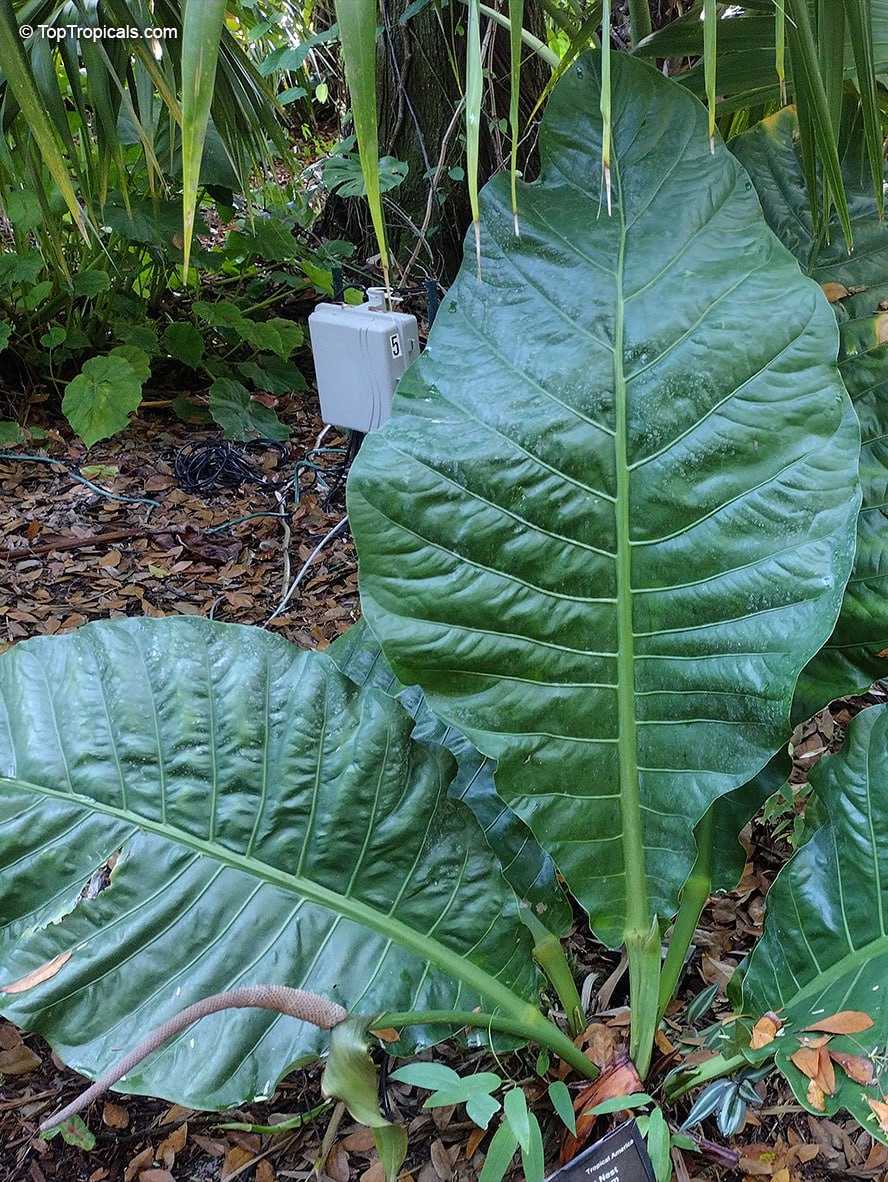
Anthurium x hookeri - Giant Bird's Nest

Anthurium x hookeri - Giant Bird's Nest fruit

Anthurium x hookeri - Giant Bird's Nest fruit
- Anthurium x hookeri - Giant Bird's Nest - is one of the most wanted tropical jungle plants. It has impressive foliage: enormous, wrinkly leaves with a unique cardboard-like texture that can grow up to 7 feet long! The bright red berries add to the show.
- Jungle allure: perfect for creating a lush, tropical atmosphere with its striking and bold presence.
- Ideal for spacious areas: thrives in places with good natural light and ample space, making it a standout feature.
- Easy care: low-maintenance epiphyte, requires very little water.
- Tolerates low light conditions, perfect for a shade garden.
- Conversation piece: eye-catching texture adds visual interest and depth to your plant collection with its distinctive leaf surface. The size of the leaves is unbelievable!
- Suitable for indoor and outdoor settings.
- Air purifying: helps improve air quality, making it a functional and beautiful addition to your home.
- Tropical statement: brings a piece of the jungle into your environment, transforming it into a green oasis.
🛒 Order Giant Birdnest
#Nature_Wonders #Container_Garden #Shade_Garden
🏵 TopTropicals
Date:
Mark your calendars: March 2, 2024
Plant Festival "March into Spring!"
Saturday, March 2, 9 am - 4 pm
Save the date! On March 2, 2024, join us for our vibrant Plant Festival, "March into Spring!"
Dive into a world of lush greenery, blooming delights, and rare fruit trees
at our garden event. Discover unbeatable sales, exclusive deals, delightful
gift bags, and receive free plants with every purchase.
Don't miss out on this opportunity to embrace the beauty of spring and
elevate your garden to new heights!
Highlights of the event:
30% OFF online prices, one day only!
(excluding 15 gallon material and rare plants)
Gift bags - for first 25 customers with $50 order
Secret Garden: Super savings area 50-70% off
$5 and $10 plants
Raffle
Free plant with any purchase as a token of our appreciation
Event discounts valid at both locations:
Ft Myers Garden Center: 13890 Orange River, Ft Myers, FL
Sebring B-Farm: 9100 McRoy Rd, Sebring, FL
Date:
Healthy Plant Food: Q&A from Mr Booster
Why my Sapodilla is not fruiting?
Q: I bought a Sapodilla tree from you several years ago, Silas Woods. I live in Houston area. The tree grows and produces blossoms for fruits, but then they just dry up and fall off. To-date, I have not gotten any fruits off the tree. Is there a reason for this? I really want a fruiting tree because Sapodilla is one of my favorite fruits. I have attached pictures of the tree. Please help.
A: Silas Woods is a free-flowering variety and in favorable conditions it should produce fruit almost year round, considering warm temperatures. The fact that the tree is producing flowers indicates that it is strong, overall healthy and ready for production, but for some reason these flowers don't set fruit. There may be several reasons for such behavior.
1) Too high temperature and too low humidity
In Houston area, humidity should be good in summer. However, if
temperatures stay above 90F for a long time, this may cause flower dry-n-drop.
Solution: try to move the potted tree into filtered light, or in a
spot where it does not get direct burning sun during the hottest hours of the
day (morning sun is the best)
2) Root bound.
Solution: check if the tree needs stepping up into a larger
container.
3) Lack of certain nutrients that are responsible for proper fruit
formation.
In particular, elements B (Boron), Mo (Molybdenum), and a few other
micro-elements (Fe - iron, Cu - Copper, etc.). This is most likely the cause of a
flower drop. This is very common reason for undeveloped fruit or lack of fruit
in container-grown fruit trees. When grown in the ground, plants can reach
out to all necessary elements in surrounding soil (considering soils are not
too poor on necessary elements). In a pot, a supply of nutrients can be
exhausted very quickly, so a quality fertilizer program is very important.
Fertilizer must include all necessary nutrients in easy accessible form, and a plant
must have their constant supply for proper development.
Solution: prescribe to your Sapodilla tree the following combination
of plant food:
- SUNSHINE C-Cibus - Crop Nutrition Booster. It will provide
well-balanced amounts of high absorption Nitrogen, as well as other macro-elements - to
provide enough energy to the tree, plus a combination of all necessary
micro-elements. It is safe to apply this fertilizer as frequent as with every
watering, including winter time.
- SUNSHINE-Honey - sugar booster. This supplement has a high content of
elements Mo and B - once the tree starts getting them on regular basis (a few
times a year, according to the label), it will change its habit dropping
flowers and/or premature fruit drop. As extra bonus, Sunshine Honey makes fruit
sweeter by bringing sugars from all over the plant and concentrating them into
fruit.
4) Lack of pollinating insects.
Solution: For most effective pollination, we always recommend to put
some pieces of fruit under the tree, apple peels, or even banana peel. Those
attract tiny beetles that are responsible for small flower pollination.
With winter time approaching, fruiting season is about to end, however, do not get discouraged and start the fertilizing program right away: this will bring up the plant into a healthy stage within a few months, and by next season it should be covered with fruit you like so much! Remember, Sunshine liquid fertilizers can be used year round, including winter, without a risk to burn roots or overdose, as long as you follow label instructions.
SUNSHINE C-Cibus - Crop Nutrition Booster from Garden Series, or Combo Total Feed Collection - all nutrients in just one bottle, for fruit trees and edibles.
Date:
URBAN TROPICAL GARDENING:
10 secrets of successful Container Mango growing on a
balcony.
Q: I live in Miami in apartment on a second floor, and I have a balcony with SE exposure. I wonder if I can grow a mango tree in a pot? Will it fruit for me? I recently moved to South Florida and I don't know much about tropical plants; but I tasted real fiberless mangos from someone's garden - it was so delicious and different from those in the grocery store. I wonder if I can have a fruiting tree on my balcony? And if yes, how do I plant and take care of it?
A:
Yes, you can! Here is what you need to do:
1) Temperature. You are lucky to live in Tropics,
keep it on a balcony year round.
2) Light. Position the pot in a spot with the most
sun exposure. Mango trees can take filtered light too, but
the less sun, the less fruit you will get.
3) Soil and Container. Use only
well drained potting mix. Step up the purchased
plant into next size container (3 gal into 7 gal, 7 gal
into 15 gal). When transplanting, make sure to keep growth
point (where roots meet the trunk) just at the top of the
soil. Covering base of the trunk with soil may kill the
plant.
4) Water. Water daily during hot season, but only
if top of soil gets dry. If it still moist, skip that day.
Mangoes (unlike
Avocados!) prefer to stay on a dry side.
5) Fertilizer. Use
balanced fertilizer once a month, 1 tsp per 1 gal of
soil. Do not fertilize during fruiting - this may cause
fruit cracks.
6) Microelements. Apply
SUNSHINE-Superfood once a month. This will help your
mango healthy, vigorous, and resistant to diseases. Use SUNSHINE-Honey to make your
fruit sweeter.
7) Insect control. Watch for scales and mealybugs,
clean with solution of soapy water + vegetable oil (may
need to repeat 2-3 times with 10 days interval), or with
systemic insecticide like imidacloprid only as needed (if
non-harsh treatment didn't help). Most Flea shampoo for
dogs contain that chemical, you may try that shampoo
solution.
8) Trimming. Once potted, do not remove leaves
that are discolored or have spots until new growth
appears. Dark dots on mango leaves, especially in humid
climate like Florida, may be signs of fungus. Treat with
fungicide according to label, and remove only badly
damaged leaves. Trim crown as needed after flowering and
fruiting (by Fall). Train into a small tree, and you may
remove some lower branches eventually.
9) Flower and fruit. Mangoes are winter bloomers
with bunches of tiny flowers coming in thousands. Many of
them set fruit (if pollinating insects present). Keep in
mind that young trees can only bare a few fruit. Normally
a tree will drop excessive fruit and keep only a few that
it can manage. To save the young tree some energy, remove
fruit if too many and leave only 2-3 for the first year.
It will pay you next year with more abundant crop.
10) Variety. Last but not least: Choose the right
variety for container culture! Pick from "condo" dwarf
varieties such as Icecream, Nam Doc Mai, Carrie, Cogshall, Julie, Fairchild, Pickering, Graham, Mallika, and a few others -
check out Mango Chart pdf
and full list of our Mango varieties.
How this breath-taking flowering tree stays so compact
🌸 Ceiba hybrid - Dwarf Pink Princess - is one of the #Nature_Wonders that takes your breath away!
🌸 A compact marvel of nature that redefines beauty in small spaces, this exquisite hybrid of the Pink Silk Floss Tree (Ceiba speciosa) grows to a manageable height of just 8-12 feet, making it perfect for small yards or container gardening.
🌸 Its spreading crown and profusion of blossoms make it a showstopper, proving that you don’t need a giant tree to make a big impact.
In bloom, the tree is a spectacle: nearly leafless, with its crown exploding into tens of thousands of pink flowers, creating a vibrant, colorful mass.
🛒 Order Pink Princess
#Trees
🔴 Join 👉 TopTropicals
What is Mickey Mouse Plant?
🐭 Ochna integerrima - Vietnamese Mickey Mouse plant, Hoa Mai.
- ⭕️ Its seeds and sepals resemble the face of Mickey Mouse, hence the common name.
- ⭕️ Hoa Mai, also known as Yellow Mai Flower, is the quintessential symbol of Spring in Vietnam, especially during the Tet celebration.
- ⭕️ "Hoa Mai" translates to "yellow blossoms," highlighting the bright yellow flowers that bloom during Tet.
- ⭕️ Ochna integerrima is a medium-sized shrub that can be trained into a miniature tree, making it a prized plant for exotic collections.
- ⭕️ In winter, it is covered with bright yellow flowers, which are believed to bring good luck and prosperity during the Tet celebration.
🛒 Get your own Mickey Mouse Plant
#Hedges_with_benefits #Nature_Wonders
#Fun_Facts
. . . . . . . . . . . . . . . . . . . . . . . .
🔴 Join 👉 TopTropicals
. . . . . . . . . . . . . . . . . . . . . . . .

